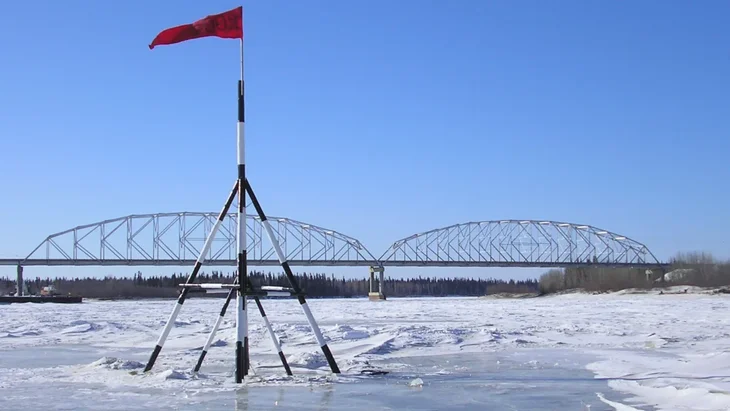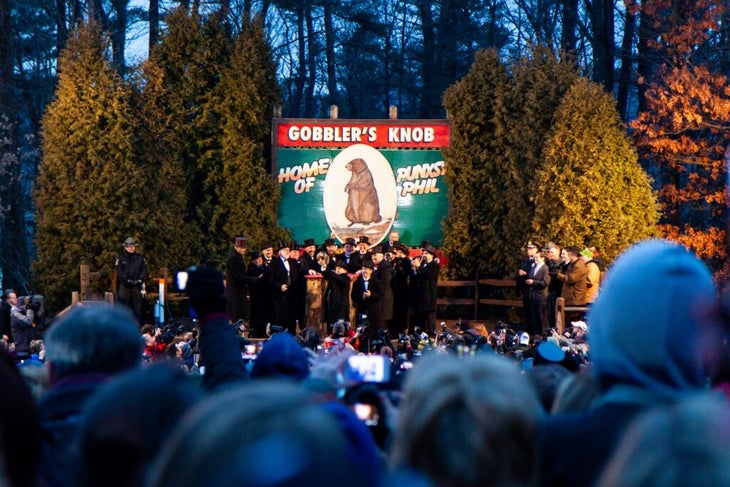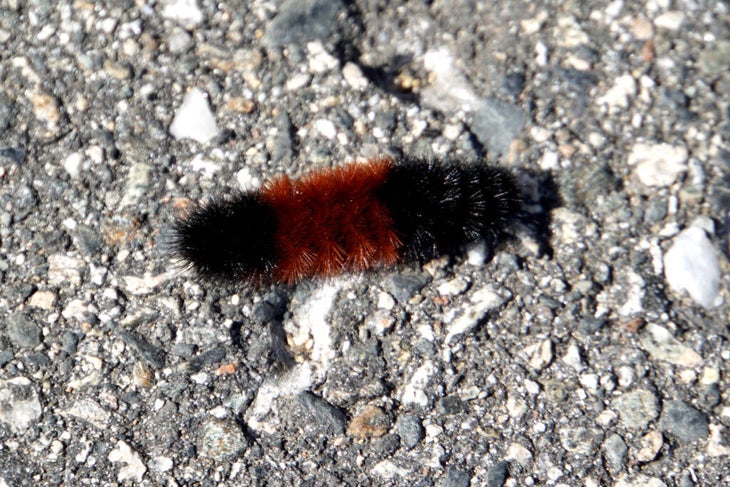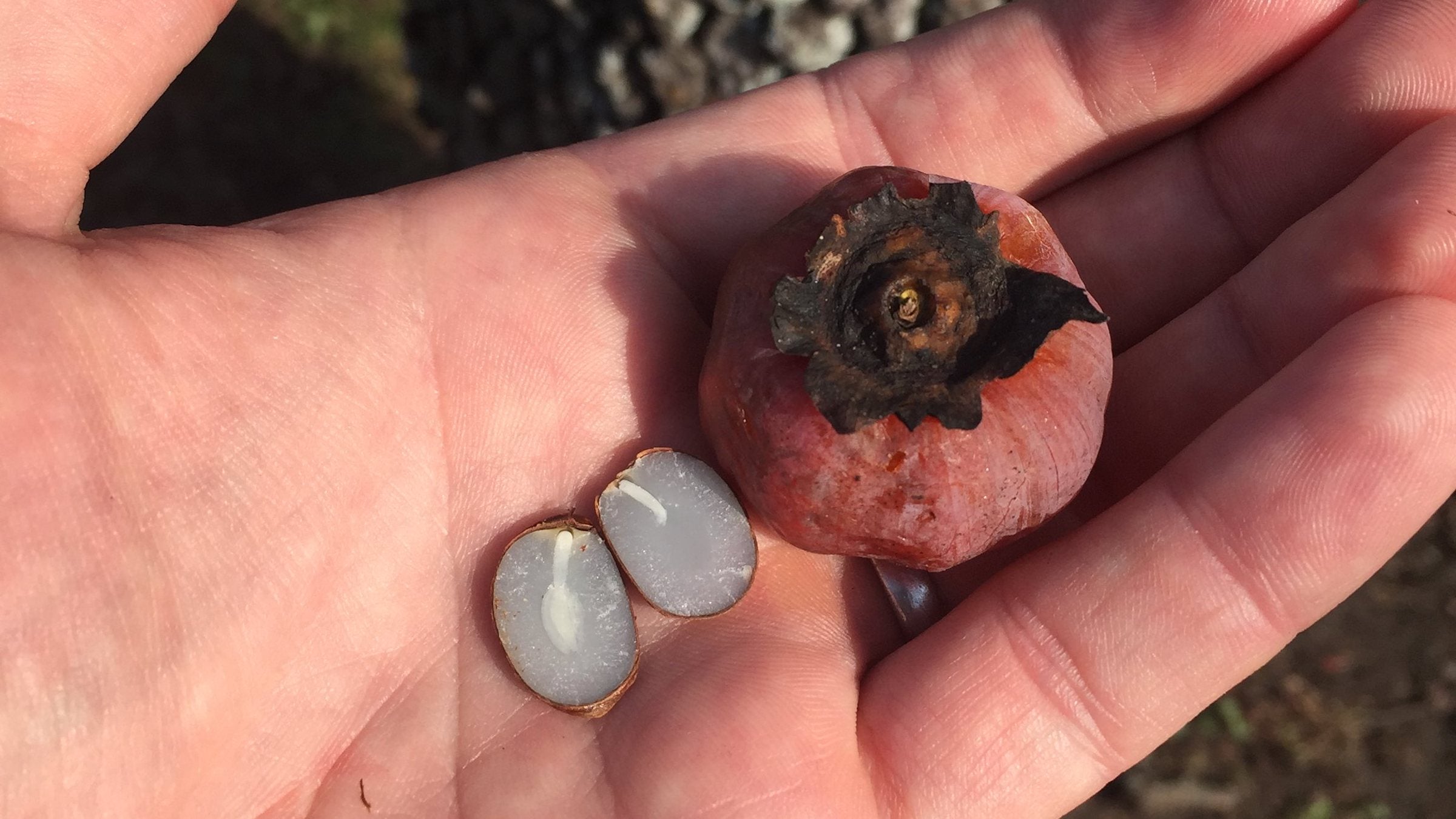Over the centuries, people have pressed all sorts of creatures, from cows to frogs to crickets, into the service of meteorological forecasting. Some instances of animal-aided forecasting are truly bizarre: In the 1800s, two British meteorologists created a complex instrument called a Tempest Prognosticator, which relied on .
Thankfully, much of that folklore and leech-keeping has given way to modern forecasting algorithms, radar, and satellite imagery over time—but not everyone is willing to leave the old methods behind. Here are a few of the strangest ways in which people still forecast long-term weather—ranked from least to most weird.

10. The Tanana River
The tiny town of Nenana, Alaska, is home to one of the longest-running gambling events in the United States. The game? Watching ice melt. Every year since 1903, locals have placed a wooden tripod in the center of the frozen Tanana River. A cable affixed to the tripod runs across the surface to a clock on the bank. When the river ice breaks up enough for the tripod to fall in, the cable yanks on the clock, stopping it. People from around the world place bets on when this will occur, and the jackpot often surpasses $300,000. The time of breakup is considered the end of winter and the beginning of spring, and avid bettors use all kinds of homespun algorithms to predict the time of breakup, incorporating such data as annual snowfall, temperature patterns, and even train schedules.
Our take: This is the least-weird method, since melting ice definitely means warm weather. Hard to argue with that.
9. Sunspots
The Old Farmer’s Almanac has been one of America’s most trusted sources of long-term forecasting for decades. Since the 1700s, it has predicted the weather by . As the theory goes, more sunspots are correlated with more solar activity and stronger magnetic storms, which could in turn affect the temperatures here on earth. For a long time, this seemed pretty out there. But more recently, research has started to back it up. As it turns out, , albeit mostly in northern Europe and in parts of the northern U.S. In years where solar activity is calmer, pockets of cold air form high in the atmosphere, which results in colder winters and stronger easterly winds over northern Europe and the northern U.S.. When solar activity is high, those areas see milder winters.
Our take: It’s unique, but there’s some scientific backing. Not that weird.
8. Foggy Days in August
Appalachian Folklore suggests the more foggy mornings you see in August, the more days of snow you’ll have over the winter. The traditional way to keep track is to put . End your August with ten beans, and you’re likely to see an identical numbre of days of deep snow over the winter. Unfortunately, there’s suggesting any truth to this. Though, it’s nice to have an excuse to keep your beans organized.
Our take: There’s no science behind it, but at least it doesn’t involve a captive live animal. Only a little weird.

7. Live Groundhogs
Puxatawny Phil is only one of dozens of groundhogs around the world that are kept under close watch in early February. If the groundhog sees its shadow, six more weeks of winter are said to follow. Of course, all the groundhogs have different predictions, and their rates of accuracy are . The idea of Groundhog Day came from a German custom, which had to do with a badger seeing his shadow. We think that swapping in the ferocious and unpredictable carnivore would liven up what’s become a somewhat sedate tradition.
Our take: We love to hate on beloved family pastimes. As popular as this method is, it’s still pretty weird.
6. Dead Groundhogs
In researching this story, we discovered that not only are there dozens of live forecasting groundhogs, but . Example A: a stuffed groundhog in Pennsylvania named Uni. Every year, Uni is lashed to a tiny raft and floated down Tulpehocken Creek for a while before he’s fished out. An official interpreter leans down to listen to Uni’s supposed prediction, and delivers the prediction in Pennsylvania Dutch. A second interpreter stands by to translate this prediction into modern English.
Our take: Uh huh. Weird.
5. Persimmon Seeds
Another gem from the American South: If you cut open a persimmon seed in the fall and find a spoon shape inside, expect snow. If you see a knife shape, the winter will be bitter cold. And if you see a fork shape, . While the seeds do contain shapes that resemble these three utensils, there’s no scientific basis for their correlation to weather conditions. But the fruit is still delicious, so we can’t not recommend trying.
Our take: It’s cute, but what do fruits know about weather? We’ve never met a persimmon that passed a third-grade science class. For sure weird.
4. A Desert Tortoise
No weather-telling groundhogs live in Palm Springs, California. There is, however, a highly respected tortoise. Every year, Mojave Maxine emerges from her burrow sometime in February, and her sighting heralds warmer weather to come. Like the Nenana Ice Classic, this one , though the gamblers are mainly children, and there’s no money involved.
Our take: She’s cute, but, like the persimmon, not likely to possess knowledge of basic math. Plus, she’s been asleep all winter. What could she possibly know? Real weird.

3. Wooly Worm Caterpillars
In the town of Banner Elk, North Carolina, thousands of people gather every year to . The strongest, fastest caterpillar is used to predict the weather. As the legend goes, each segment of the caterpillar corresponds to a different week of winter. The color of that segment tells you what the weather will be for that week. Every year, the festival’s official worm reader (which has, for years, been ex-NBA basketball player Tommy Burleson) hands down the forecast. He claims his predictions are up to 90-percent accurate.
Our take: We admire the organizers’ ability to get thousands of people excited about keeping worms as pets. But still pretty dang weird.
2. Pig Spleens
For decades, a family in Saskatchewan, Canada, has butchered a pig every six months and . The organ is split into six different segments, and sections of thickened tissue are said to correlate to spells of colder weather. Some years, Jeff Woodward, the current “pig spleen prognosticator,” analyzes several spleens and . He’s not the only such prognosticator in Canada, but he has among the largest followings.
Our take: The amount of training this requires is admirable. But the amount of dead animal handling is significantly more than that of the stuffed groundhog phenomenon. And again, there’s no scientific basis. We’re calling this one pretty out-there.
1. A 93-Year-Old Alligator
In Texas there lives a named Al. Every spring, handlers offer Al a large piece of chicken. If Al swallows the chicken, spring has arrived. If Al refuses the chicken or spits it out, six more weeks of winter are to follow. Al has now clocked about 18 years of service in his current role, but there’s no evidence that he has any idea what he’s doing.
Our take: No big decisions should be based upon a geriatric gator’s indigestion. Most weird.


